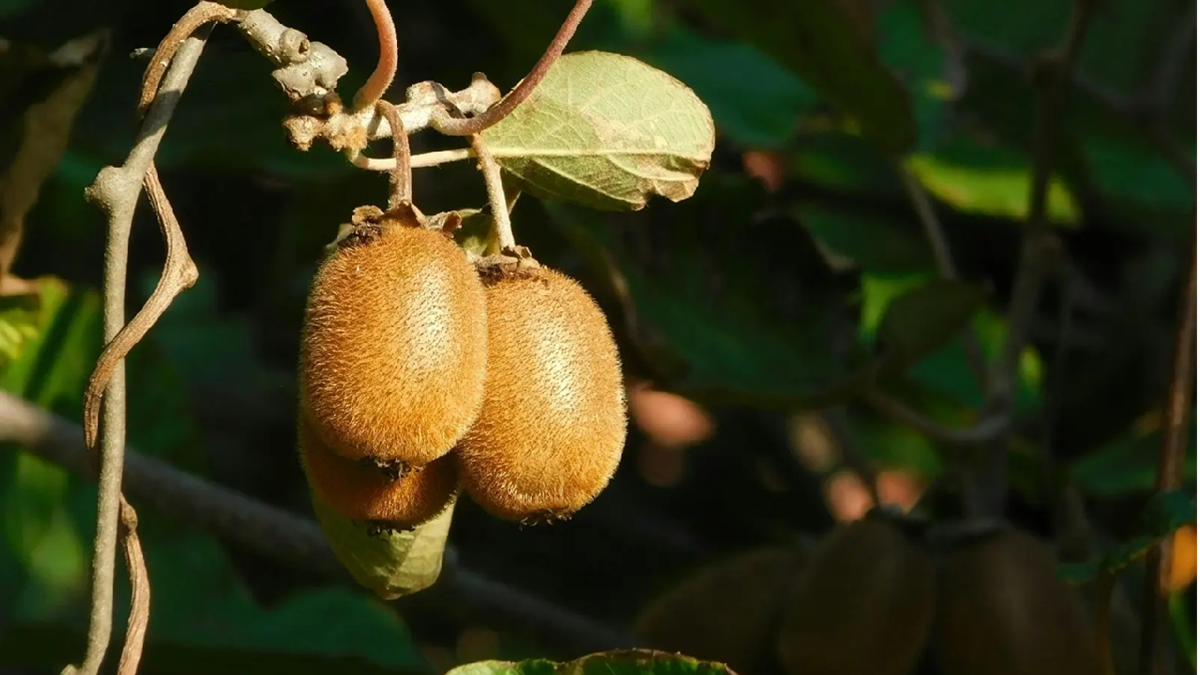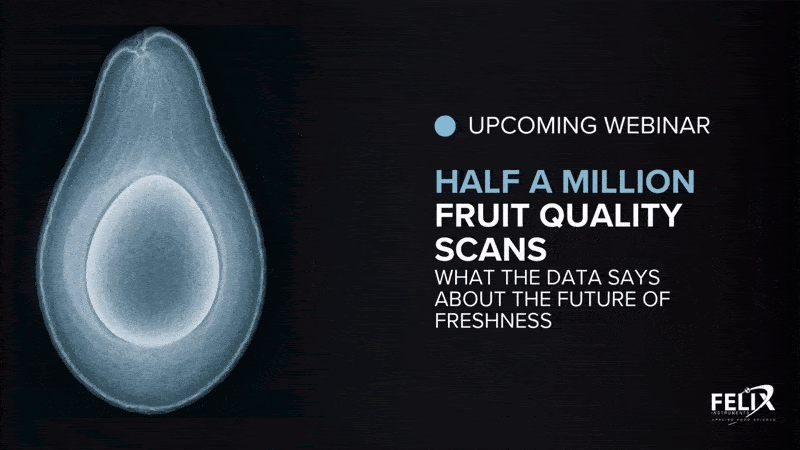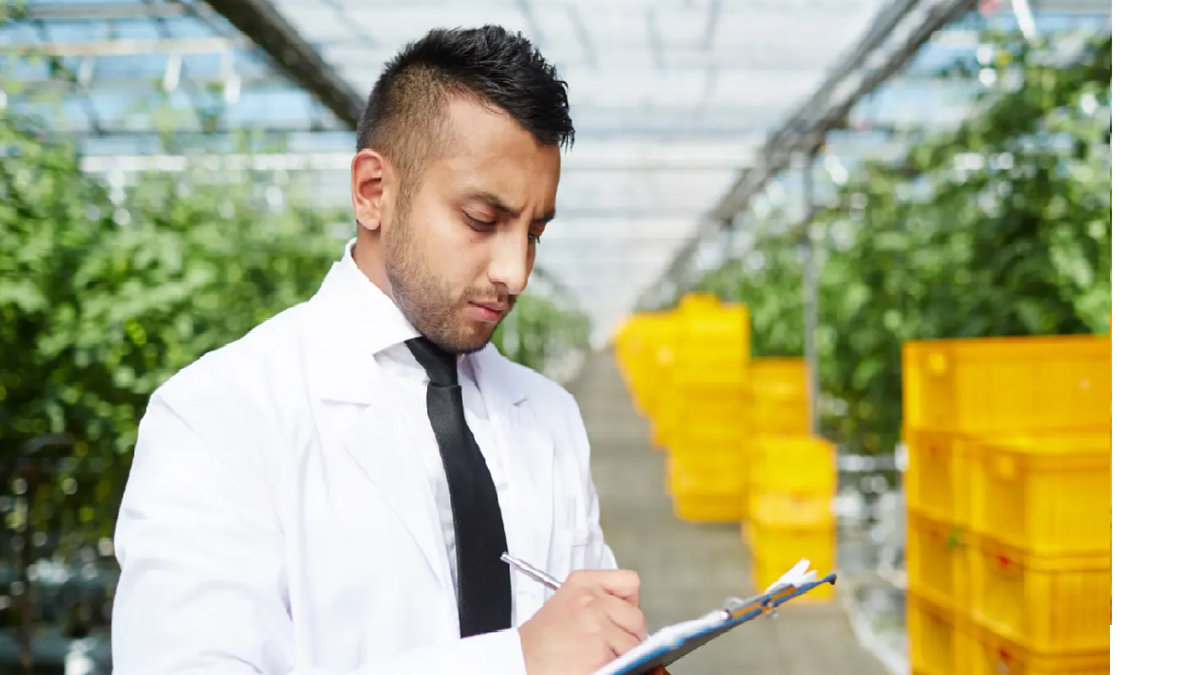Measurements
Testing gamma radiation effects on avocado quality
Quarantine pests are species not present in some countries. If imported into these regions, the pests could cause considerable economic and ecological havoc because they lack natural predators to control them. Once new species are imported, they spread quickly, as it is complicated to manage their numbers. As part of phytosanitary measures, countries can restrict food carrying quarantine pests. In the case of Hass avocados, the quarantine pests are fruit borers ? Stenoma catenifer (moth), Heilipus lauri, and H. trifasciatus (weevils). These insects bore into the flesh and seeds of the fruits producing frass and causing premature fruit drops. Hence, the pest affects both the quality and yield of avocados. Attempts to control quarantine pests through Integrated Pest Management in orchards have, as of yet, not been successful. The repeated applications of chemicals necessary to prevent the borers make the fruit unsafe for human consumption. Trying to cull avocados affected by borers is also not easy due to the large number of fruits and the small size of the eggs and larvae.
31 August, 2022
Quarantine pests are species not present in some countries. If imported into these regions, the pests could cause considerable economic and ecological havoc because they lack natural predators to control them. Once new species are imported, they spread quickly, as it is complicated to manage their numbers. As part of phytosanitary measures, countries can restrict food carrying quarantine pests. In the case of Hass avocados, the quarantine pests are fruit borers Stenoma catenifer (moth), Heilipus lauri, and H. trifasciatus (weevils). These insects bore into the flesh and seeds of the fruits producing frass and causing premature fruit drops. Hence, the pest affects both the quality and yield of avocados. Attempts to control quarantine pests through Integrated Pest Management in orchards have, as of yet, not been successful. The repeated applications of chemicals necessary to prevent the borers make the fruit unsafe for human consumption. Trying to cull avocados affected by borers is also not easy due to the large number of fruits and the small size of the eggs and larvae. In these circumstances, post-harvest treatments are being explored as a means of reducing pest damage, complimentary to cultural practices. Previous industry experience with gamma radiation has shown that the treatment can control target species without affecting other arthropods or harming the environment. Even when it doesnt achieve 100 percent mortality of insects, gamma radiation induces sterility in pests. Many foods treated successfully with gamma radiation were found to be safe to consume, and there was no adverse effect on quality or shelf life of the commodity. Hence, a group of agricultural scientists tested gamma radiation as a possible post-treatment for avocados. Generic doses, which control a wide range of pests, are set at 150 Gy for fruit flies and 400 Gy for quarantine pests. However, the required levels needed for avocado quarantine pests are unknown. Testing radiation effects on qualityThe agricultural scientists, Lizarazo-Peña, Darghan, and Herrera, needed to evaluate the effect of generic doses, of gamma radiation from Cobalt 60, on the quality of fruits. The scientists harvested four groups of Hass avocados from different ripening stages. The ripening stage was confirmed by measuring dry matter content, usually used as the harvest index. They chose only good fruits without any injury or deformation for the experiment. The gamma radiation (GR) was administered between two to three days of harvesting the fruits. Four levels of GR (100, 200, 400, and 800 Gy) and one control for each ripening stage were used. After the treatment, avocados were precooled to 10oC for two hours and stored at 7oC for 20 days to simulate transportation conditions. Eight fruits, two from each ripening stage, were tested on 0, 5, 10, 15, and 20 days. Quality parameters estimated by destructive sampling were exocarp and mesocarp color, firmness, dry mass, soluble solids, and weight; Measurements were taken at five longitudinal points for each fruit. Respiration intensity was assessed non-destructively by measuring carbon dioxide levels. At the end of the experiment, after twenty days, first ethylene production and then lipid peroxidation were measured for the same fruits. Ethylene production measurement was non-destructive and performed using the F-900 Portable Ethylene Analyzer. The device, manufactured by Felix Instruments Applied Food Science, has two electric sensors to detect gas concentrations as low as 0.025 parts per million. The fruits were placed in a 2-L hermetic chamber 30 minutes after removal from the fridge. The scientists connected the device to the chamber and recorded ethylene production for five minutes, at seven-second intervals. Gamma Radiation spoils hass avocado qualityGamma radiation treatments produced significant differences from the control at the end of 20 days for the quality parameters, firmness, external and internal color, total soluble solids, and respiratory intensity. However, there wasnt much difference between the effects produced by the four radiation levels. Treated fruits experienced more lipid peroxidation though only the 400 and 800 GY treatments significantly differed from the controls. The higher peroxidation showed that treated fruits were suffering from stress. As a result, there was an increase in respiration intensity and ethylene production in treated fruits. These physiological changes explain the variations seen in the fruit quality of treated avocados. However, the increase in ethylene production due to gamma radiation was not significantly higher than in control fruits and reflected the four stages of ripening tested, see Figure 2. Due to the lower ethylene production in controls, they were more firm than treated avocados since the phytohormone initiates ripening, and softening of the flesh is an associated change. The gamma treatment influenced the color development in the exocarp in the treated fruits. There are significant differences compared to the control, though these are not visible to the human eye. Gamma radiation triggered dark tones of the fruit skin prematurely, and the color development was not natural but had strong purplish-red tones, probably due to carotenoid accumulation. The greatest impact of gamma radiation was seen in mesocarp/internal fruit flesh color. The radiation led to browning, whereas the control avocados showed no color change. As shown in Figure 3, increasing levels of gamma radiation increased the damage to the mesocarp. Even fruits with the lowest radiation levels (100 Gy) suffered. The injury occurred regardless of the different stages of ripening at fruit harvest. According to previous research, levels below 100 Gy are not enough to control quarantine pests. Since all the four levels of gamma radiation tested negatively impact fruit quality, especially the mesocarps appearance, scientists rule out this treatment to control quarantine pests in Hass avocados. Other alternativesFollowing the results of this experiment, other treatments like thermal shocks, storage temperature management, or modified storage atmospheres will need to be evaluated. Fumigants and chemicals are not advisable as they contaminate fruit, making it unsafe for consumption. This experiment shows that it is necessary to test generic treatments, which have worked more broadly, to ensure they work for the species and variety of interest. The large amounts of research this entails require easy-to-use tools like the Felix-900, which provide rapid and precise analysis in laboratories and field conditions.












